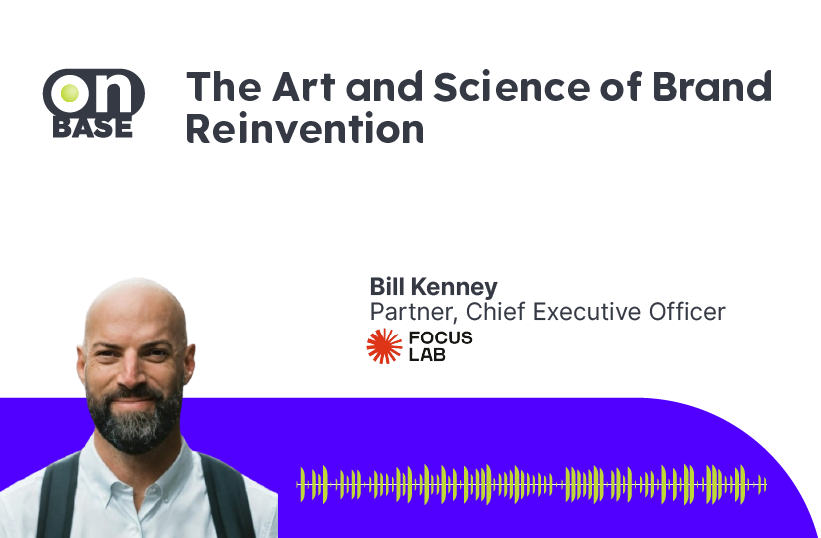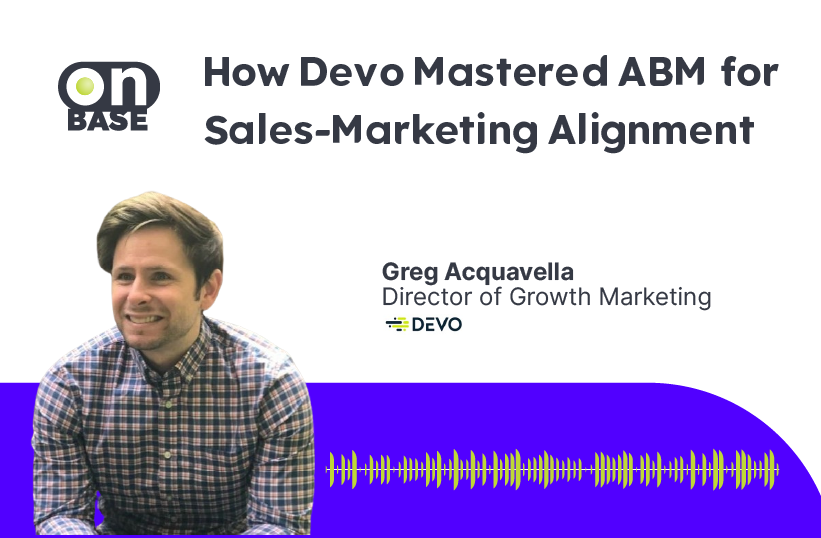Shownotes
In this episode of Sunny Side Up, host Chris Moody talks with Neil Dowling, the chief marketing officer for Rightpoint, about go-to-market strategies for the future. Neil discusses the challenges facing marketers in the current climate, including the need to do more with less and the importance of articulating the value of marketing. He also highlights the opportunities that marketers have to demonstrate the value of their work and the potential for marketers to expand into new areas, such as talent acquisition. Overall, Neil emphasizes the need for marketers to come together to defend the value of their work in the face of increased scrutiny.
About the Guest
Neil Dowling is the Chief Marketing Officer for Rightpoint, a global experience leader and Genpact company. With 20 years of experience in marketing for technology and professional services companies, previously working for businesses including Genpact, Cognizant and Fujitsu, Neil leads a team of marketers across the entire function from brand strategy to supporting company revenue targets to creating sustainable growth.
Key Takeaways
- The economic downturn has led to a focus on simplicity in marketing, with less emphasis on complex programs and messages.
- Companies may be more hesitant to invest in marketing, leading to challenges for marketers to do more with less.
- There are opportunities for marketers to expand their roles into areas such as talent acquisition and to demonstrate the value of marketing through education and articulation.
- Strategies for alignment include understanding each other’s pressures and goals and delivering outcomes that match each team member’s role.
Quote
“There’s a fine line between making sure you are collaborative and making sure you are trying to deliver what their role is within the company, which is super important”.
– Neil Dowling
Highlights from the Episode
With all the uncertainty that’s happening for us, especially marketing leaders, what should we expect from marketing in the next couple of years?
In the coming years, marketing leaders can expect a challenging and uncertain environment. Companies may be more cautious about their return on investment in marketing, leading to more conversations around the value of marketing. Marketing may be asked to do more with less and potentially expand into new areas, such as talent acquisition. There may be increased pressure on marketers to focus on short-term results. However, this difficult climate also presents opportunities for marketers to demonstrate the value of their work and to push for the importance of marketing within organizations. Overall, the role of marketing in organizations is likely to become more prominent.
What are your thoughts about splitting up brand and demand and making sure you still focus on brand while you’re constrained to showing the value of marketing?”
In my opinion of Neil, splitting up brand and demand and focusing on the brand while being constrained to show the value of marketing can be dangerous and damaging for organizations. The speaker believes that marketers need to find a way to stay the course and continue with broader, brand-awareness efforts, but also need to be able to articulate the value of these efforts in a way that makes sense from a commercial return perspective. Neil then suggests that marketers need to use language that a CFO would understand to find a balance between investment in the market on a broader level and short-term sales lead generation efforts. He also emphasizes the importance of understanding the impact of investment on the organization, such as shareholder value, revenue, and the relationship between awareness and customer loyalty.
Do you think that brand and demand should be split into two camps? How should brand and demand leaders be approaching that collaboration?
Neil believes that it is not beneficial for marketing teams to be split into separate “brand” and “demand” camps. He suggests that integrated marketing, where teams have a consolidated scorecard and work together, is more effective. He also believes that this approach allows for a common language and better collaboration within the team. Additionally, it helps the organization to focus on outcomes and commercial returns. Neil also notes that it is important for both sides to understand and learn from each other. He recommends that marketing teams should be integrated and work towards a common goal of growth for the company.
How do you approach that balance and dynamic of staying the course and making sure that we are doing what we really should be doing?
To approach the balance and dynamic of staying the course while ensuring that the right actions are being taken, Neil suggests relying on experience and instincts to make decisions that serve the long-term growth and value of the company. He also recommends developing and articulating a clear narrative around the organization’s ROI model, deal sizes, impact on revenue, and conversion rates. Additionally, Neil suggests being present in the business end of the company to earn the right to pursue longer-term, top-of-the-funnel goals, and to use quick wins to gain permission to achieve the desired balance.
How should marketers approach one-to-one ABM and how should they approach that to maximize engagement and revenue?
Marketers should approach one-to-one account-based marketing (ABM) by considering it as a campaign, working closely with the sales team to develop a winning strategy, and articulating a value proposition. This approach can help to lobby for budget and demonstrate value, as well as potentially improve the chances of making it to the shortlist in the sales process. To maximize engagement and revenue, marketers can use targeted digital and social media efforts, as well as create executive summary material and other assets to support their efforts. The ultimate goal of one-to-one ABM should be to make it to the shortlist, rather than necessarily winning the business, as the final decision often comes down to factors such as price.
Do you have any approaches to how you look at sales and marketing alignment?
Sales and marketing alignment is a concept that involves the alignment of the goals and strategies of sales and marketing teams within an organization. This alignment is seen as crucial for achieving better results and a more cohesive brand message. Neil suggests that one approach to achieving alignment is to engage with and understand the perspective of the other team, as well as to align with their goals and pressures. He also emphasizes the importance of communication and collaboration, as well as a shared understanding of the goals and metrics of the organization. He also advises being open to different channels and strategies, while still owning the outcomes and paths to achieving them. Finally, Neil notes that the approach to alignment may vary depending on the organization and its culture.
How you’re working with your team, how you’re collaborating with folks, and how are you approaching that in these uncertain times?
To approach collaboration with a team in uncertain times, it is important to regularly check in with team members and consider ways to prevent burnout. Talent retention should also be a priority, as people may start to question their role or look for opportunities elsewhere. Developing and growing team members can help retain talent, and thinking about how flexible team members’ skill sets can be can open up new opportunities within the organization. Maintaining team spirit and ensuring that team members feel connected to the purpose and value of their roles can also be helpful.
How your organization is adapting to the economic downturn?
Rightpoint is adapting to the economic downturn by implementing more agile planning cycles and focusing on shorter-term plans. The emphasis is on maintaining a clear and simple message, providing a smooth customer experience, and focusing on priority markets and accounts. The idea is to streamline the go-to-market strategy and reduce the number of variables to be more efficient and effective in the market.
Is there a book, blog, newsletter, website, or video that you would recommend to our listeners?
A book: Legacy: What the All Blacks Can Teach Us About the Business of Life by James Kerr
Shout-outs
Stacy Simpson – Chief Marketing Officer at athenahealth
David Van Schaik – Chief Marketing Officer at The Marketing Practice
Jurgen Klopp – Football Manager at Liverpool FC

Sunny Side Up
B2B podcast for, Smarter GTM™




